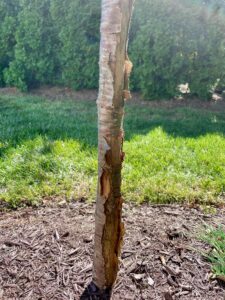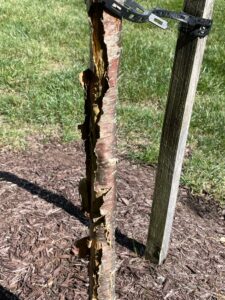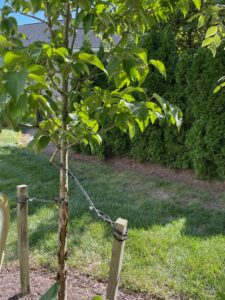Protect Your Trees from Buck Rub Damage
As summer ends and fall begins, male deer, or bucks, start to engage in a natural but destructive behavior known as buck rub. Throughout the summer, bucks grow new antlers covered in a soft, velvety layer. By late summer, as their antlers mature, this velvet starts to itch. To relieve this irritation, bucks rub their antlers on tree trunks, scraping away the velvet.
This antler rubbing isn’t just for itch relief. It intensifies throughout the rutting season, where bucks mark their territory and assert dominance over other males. While the rut can occur between August and February, peak activity happens between September and December. Even after the rut ends, antler rubbing resumes in late winter through spring, as bucks begin shedding their antlers, often using trees to pry them off. You can expect to see this activity between late February and April.
The Impact of Buck Rub on Trees
While this behavior is normal for bucks, it can cause significant damage to your trees. Repeated rubbing can break the bark and disrupt the tree’s sap flow. The phloem, a thin layer just beneath the bark, is responsible for moving nutrients through the tree. If damage to the trunk covers 60-100%, the tree could suffer severe dieback or even die.
Which Trees Are Most Vulnerable?
Bucks typically target young trees and shrubs with thin, smooth bark. Their favorites include:
- Elms
- Maples
- Dogwoods
- Willows
- Magnolias
- Redbuds
- Cherries
- Birches
- Evergreens
Larger, more mature trees are less likely to be affected, but saplings and smaller trees with pliable trunks are at high risk.
Trees bucks tend to avoid:
- Oaks
- Hickories
- Tulip poplars
- Black gum
- Hornbeams
How to Protect Your Trees
The best way to protect your vulnerable trees during buck rub season (September to April) is with physical barriers. Simple guards like plastic tubing or fencing can prevent bucks from damaging your trees. As your trees mature, they become less susceptible to this kind of damage.
If you have younger trees or shrubs, now is the time to take preventative action. Protecting your trees not only helps them survive but also ensures that they thrive for years to come.



